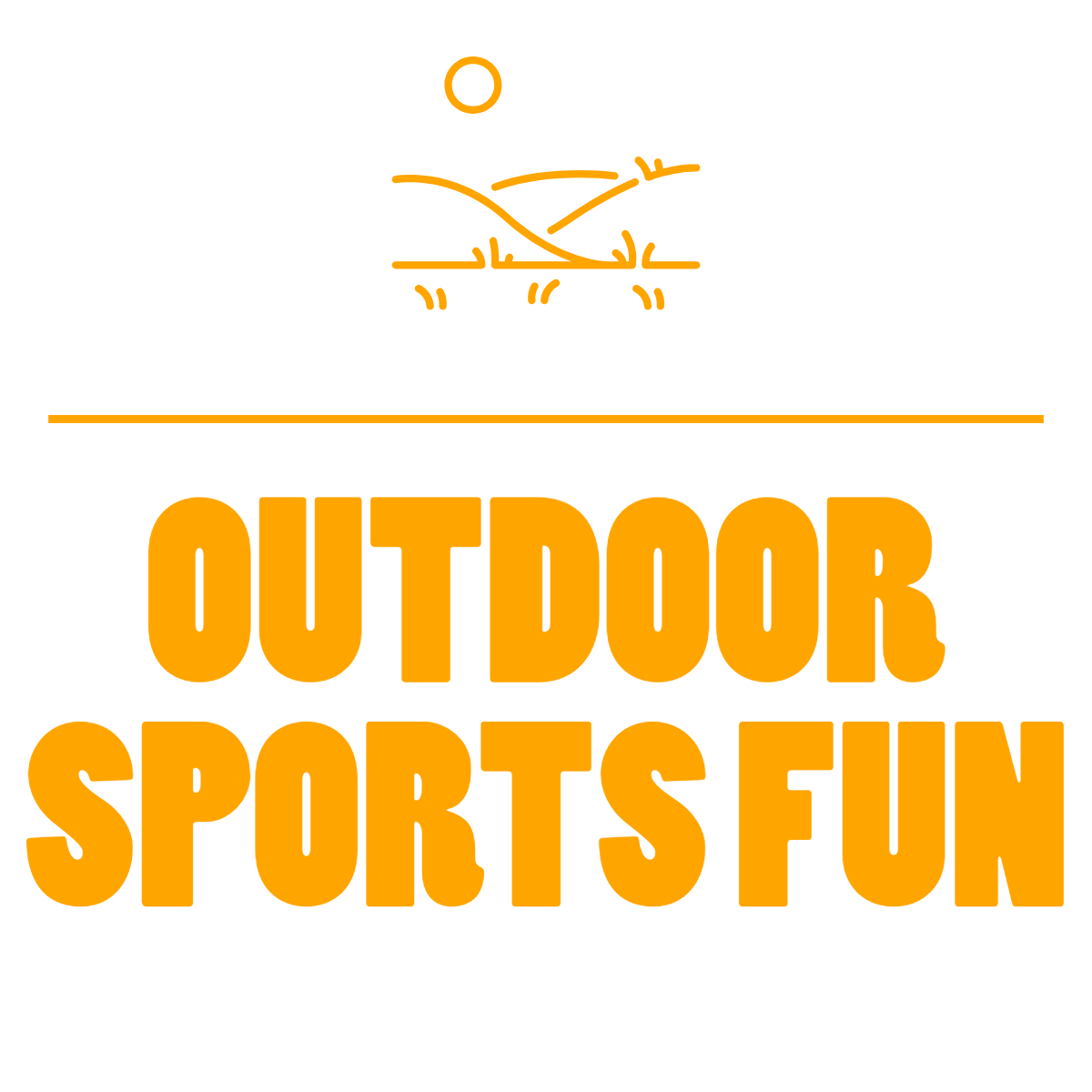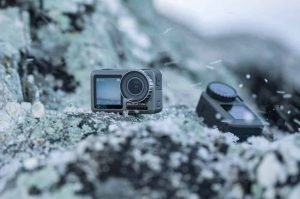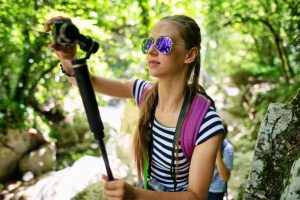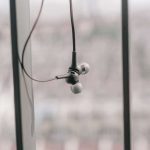After a long wait, the last two models of the Mavic 2 Pro and Mavic 2 Zoom drone from the well-known DJ drone manufacturer were also released.
Both the Mavic 2 Pro and Mavic 2 Zoom have many exciting new features for drone enthusiasts. However, DJI’s offering two Mavic 2s simultaneously will probably make many users inevitably wonder what kind they should buy. This is the first time DJI has released two separate drone models without specifying the differences in features between them.
Mavic 2 Pro or Mavic 2 Zoom will all have their own unique, dedicated advantages for specific purposes. This article shows the benefits and specific features of each Mavic 2. Through it, those who intend to buy Mavic 2 and still wonder if they will quickly make their own final choice.
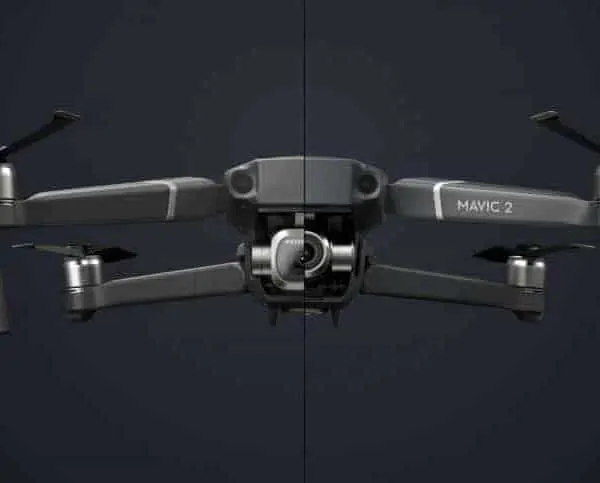
Let’s start with the most significant difference – Camera
Design: Round difference Square
Basically, Mavic 2 Pro and Mavic 2 Zoom are quite easy to identify. While Mavic 2 Zoom uses a circular camera, Mavic 2 Pro uses a square camera.
Mavic 2 Zoom has an excellent camera design. Small, symmetrical, and durable are what can be used to evaluate this camera at present. With a circular design, the camera will find it easier to find neutral density lenses and CP (circular polarized) ND lenses.
Mavic 2 Pro owns a unique camera. Because of the larger image sensor size, DJI has to find a way to make the “generals” camera follow to become proportional, but still keep the size compact enough to fit into the same position on the drone. To do this, the company has designed a camera with a square appearance with smaller round lenses inside.
The first impression of the Mavic 2 Pro camera is… a little weird, but the more I look, the more interesting it is because of its strange toxicity.
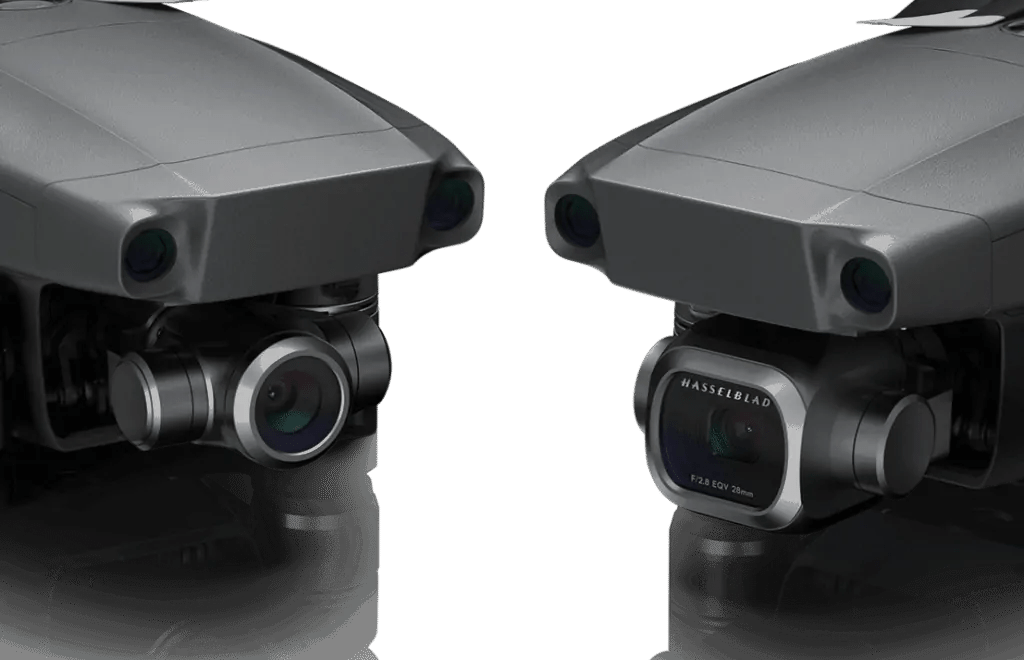
One thing is for sure, Mavic 2 Pro will also be equipped with ND and CP filters, but of course, the price will be slightly higher than the same filters for Mavic 2 Zoom because the glasses will have to be more significant a lot of.
Looking at the image, the Mavic 2 Pro’s camera looks big, but in reality, it is a bit smaller, more comfortable to imagine that the Phantom 4 Pro camera (this is the DJI’s larger drone with a 1-inch sensor.).
It’s excellent that DJI can fit such a big sensor into a tiny camera.
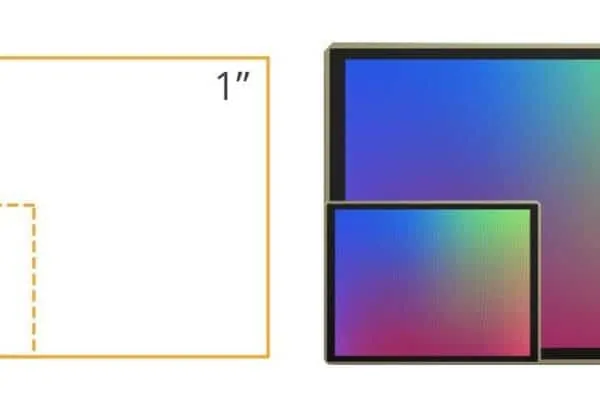
In addition to the camera, both drones have a sleeker design and more dynamic air than the early Mavic Pro, but if they look from a distance, they are no different. The only significant difference is the location of the LED on the rear two arms, making Mavic 2 easier to fly when far away.
Zoom differently. No Zoom
You may not know: Mavic 2 Pro has a fixed lens, while Mavic 2 Zoom has a zoom lens.
On Mavic 2 Zoom, you get a 24mm equivalent field of view at the maximum opening and 48m when the aperture is closed to the end of the zoom range (2X crop). This means you can apply more types of shooting and recording.
You can open the super wide aperture and record everything, or zoom in to separate the subject from the background and achieve a movie-like scene.
Plus, you can get 2X digital zoom at 1080p. You can reach the 4X zoom or 96mm field of view when combining digital and optical zoom. This is a considerable zoom level for such a small drone.
This is also DJI’s first drone with a zoom lens and the only drone to record 4K quality with an optical zoom feature.
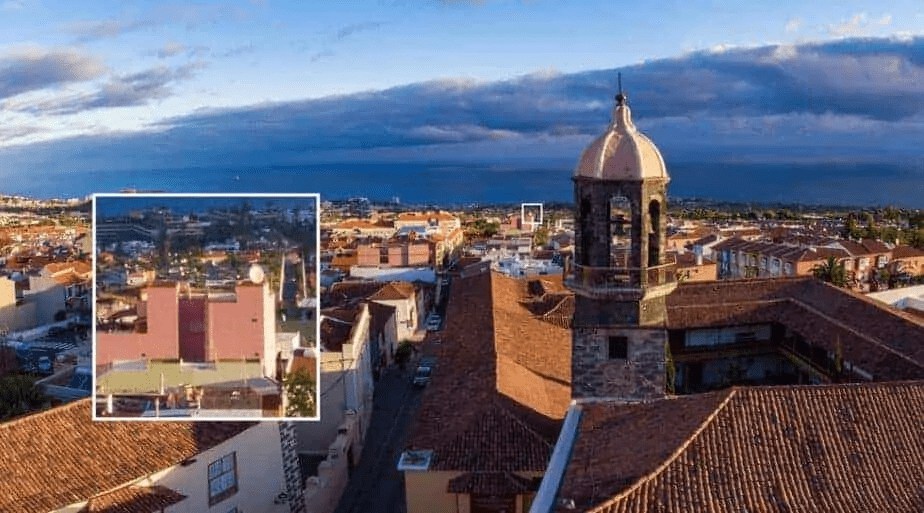
Meanwhile, Mavic 2 Pro has a fixed lens with a field of view equivalent to 28mm. Although not as comprehensive as Mavic 2 Zoom, this lens is not so narrow. You will get 1.4X 4K digital zoom capability, and if 4K video crop and drop into the 1080p timeline, you can achieve up to 2.4X zoom. However, you will have to take a bit of image quality if you start to reduce the resolution when zooming in.
The question is: Why is DJI equipped with a non-zoom lens for the more expensive Mavic 2?
There is no definitive answer to this question, but the top assumption is probably due to the impact of limited space. On Mavic 2 Zoom, the sensor size is much smaller, so the clear zoom lens is also smaller than the equivalent lens on the Mavic 2 Pro with larger sensors.
Next, let’s see what these two drones bring.
Image quality
Photo features are available on both drone models.
D-HDR
The first improvement from the early Mavic Pro was D-HDR. This mode will record RAW images consecutively and combine them to achieve 13 light-sensitive frequency steps (14 steps on Mavic 2 Pro), both to reduce motion blur and common elements. Unusual appearance when taking a traditional exposure pool.
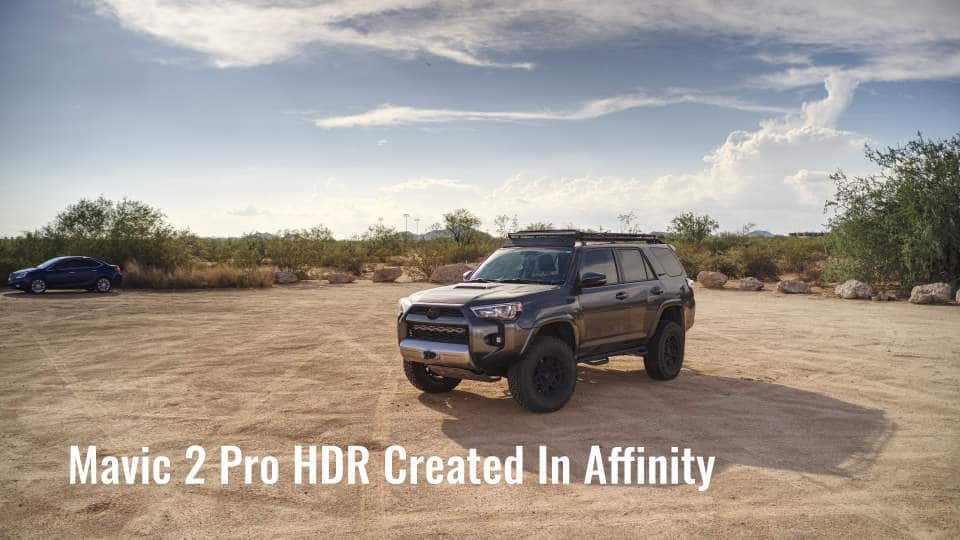
HyperLight
Another similar HDR feature is HyperLight. This feature will record a series of photos and put them together to get the best result when taking pictures at night. This feature is especially suitable for reducing image noise (the grainy effect is common when shooting at night).
The same effect can be achieved in Photoshop or Affinity Photo by using a feature called “image stacking,” but it is still better to have a simple and straightforward method to achieve results at the place instead of waiting for any expensive editing applications.

Customized Aperture
Both models of Mavic 2 now have lenses with a wide range of apertures (f/2.8-f/11). This will give you more flexibility when shooting long exposures or any situation requiring stable exposure control. The only thing to note is that changing the password can harm the overall sharpness of the image.
Take this example: if you take f/2.8, only a small part of the scene is very sharp, and the background will not be focused. This is called a shallow depth of field. Shooting at higher values like f/11 will keep everything in the focus area, but the overall image will be slightly soft. If you are not salty, you should shoot at f/2.8 to f/5.6 with soft images to achieve the sharpest image.
Photo features of Mavic 2 Zoom
The Mavic 2 Zoom has a similar 1/2.1-inch 12 million-pixel sensor on the early Mavic Pro but is equipped with some significantly upgraded features over its predecessor.
Super Res
Besides the zoom lens, the most significant new image feature on Mavic 2 Zoom is Super Res. This recording mode uses zoom lenses to record multiple photos at once and then combine them into one Super Res image – super-resolution – with a resolution four times larger than regular images.
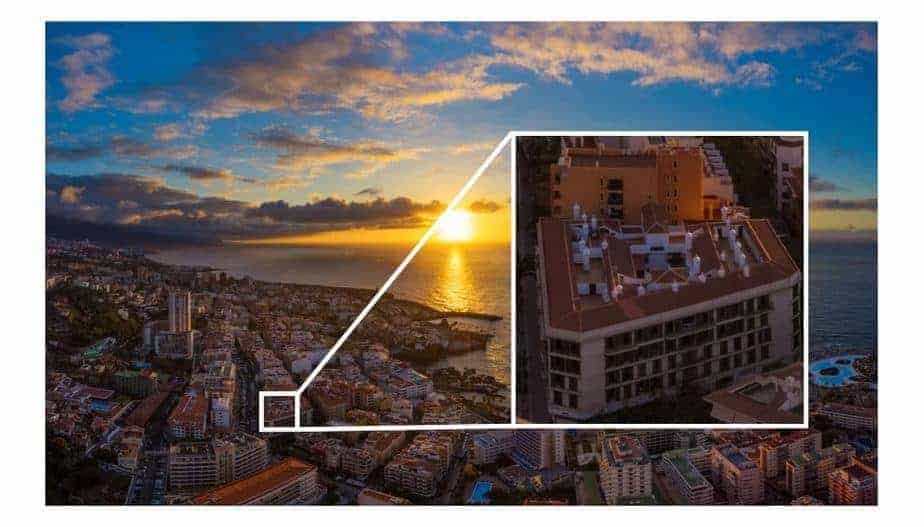
This feature is handy for landscape photography, but because it requires many images to work, you will not be able to use motion capture. The scene must be almost entirely static, and the drone cannot be moved.
Photo features of Mavic 2 Pro
Hasselblad Camera
Before considering the image quality, check out the most disturbing characteristics on Mavic 2 Pro: Hasselblad camera.
Back in 2015, DJI won a significant capital contribution in Swedish camera company Hasselblad. This is a well-known company with super expensive mid-format cameras used by many well-known photographers and even NASA. Previously DJI used to work with Hasselblad for its larger film drone devices, but the new Mavic 2 Pro is the first one developed by DJI according to Hasselblad technology.
Why Hasselblad? Large sensors, high resolution, and advanced color technology are also what you get on Mavic 2 Pro.
Sensor of 20 million true pixels
Twenty million pixel sensor for super sharp images. It doesn’t matter if there’s no Super Res feature; 20 million pixels are good enough for most shooting situations, and because the pixels are too realistic, you can also capture motion (one thing you can’t do with Super Res on Mavic 2 Zoom).
More wonderful colors
Best of all, the resolution is the integrated Hasselblad HNCS color technology. HNCS is simply a Hasselblad method to render colors accurately in any situation.
With Mavic 2 Pro, you get surprisingly standard colors, but if you shoot in RAW format, you can handle RAW files with Hasselblad Phocus software for the best color results.
Better lack of light
If you know a lot of cameras, you will understand that increasing the resolution will often reduce the size of each pixel on the image sensor. This means that each pixel will capture less light, drastically reducing low-light shooting performance.
The Hasselblad L1D-20c camera on the Mavic 2 Pro possesses a 1-inch image sensor (the largest image sensor on any market drone up to this point), and each pixel of the higher pixel count is large. More pixels of Mavic 2 Zoom. This feature and improved sensor technology give Mavic 2 Pro the ability to capture low light better.
Shallow depth of field
For close-up shooting, the larger sensor incorporating the f / 2.8 also allows you to push the background from the focus area to capture the image like a DSLR’s work. This is an original point on previous drones.
Video Quality
Video features are available on both drone models.
Video quality improved greatly, mainly due to better colors, higher bit rates, and new video codecs. The colors on Mavic 2 Zoom are very similar to those on Mavic Air. Compared to the early Mavic Pro, everything looks less haunted.
Higher bit rate
The ability to record 4K quality is excellent, but the resolution doesn’t make sense if the bit rate is not high enough. The camera compresses all recorded videos before being transmitted to the SD card. The bit rate of the original video controls how much the video will be shortened. As a result, the higher the bit rate, the less the video will be compressed.
Mavic 2 Pro and Zoom record at 100Mbps (40Mbps faster than Mavic Pro), but the most significant improvement is the new H.265 video codec.
H.265
HEVC (or H.265) is a video compression format similar to H.262. It can maintain almost the same video quality while occupying half the space.
This means that when you record at H.265, you will achieve the same quality as when you use H.264 and shoot at twice the bit rate (in this case, 200Mbps).
The video features on Mavic 2 Zoom.
The Mavic 2 Zoom has two video features that you can’t find on the Mavic 2 Pro. This is the point that makes people wonder when choosing between two drones.
Dolly Zoom
First, mention Dolly Zoom (one of DJI’s Quickshot modes). This feature is quite tricky to explain, but when the drone flies back, Mavic 2 zooms in slowly while creating a unique perspective transition.
This cinematic effect became famous thanks to British director Alfred Hitchcock.
Continuous Autofocus
Another feature that Mavic 2 Pro does not have is that autofocus continuously detects phase and recognizes contrast. On Mavic 2 Pro, you also have autofocus, but it is not really autofocus, so when you fly near something is far away, it will usually not continue to focus on the scene. There are many applications such as setting the password at a high value to focus everything or manual focus slider during flight.
The video features on Mavic 2 Pro.
Okay, another question: Why buy Mavic 2 Pro if the video feature is not excellent?
The answer is right below:
Mavic 2 Pro may lack some of the cool features of Mavic 2 Zoom, typically with continuous autofocus, but of course, Mavic 2 Pro still has its secret weapons that make people have to look.
Crop 4K Lossless
Although the Mavic 2 Pro doesn’t have an optical zoom lens, you can still shoot 4K crop mode videos for lossless zoom capabilities of approximately 1.4X.
When shooting in 4K crop mode, you will get better video quality because the resolution of the sensor with the 1.4X crop level and the resolution of the 4K recording mode are almost equal.
The narrow field of view incorporates increased quality that makes everything look better.
Dlog-M 10-bit
The next feature that makes the Mavic 2 Pro worth the money is the Dlog-M 10-bit color profile. This is the best feature of this drone.
With Dlog-M, all color details are preserved by capturing all the light information coming from the image sensor and compressing it into the viewable color space on any screen.
Because all color information will be weighed down, this explains why the Dlog-M movie will start to look a bit flat and ugly. It means that it will not be posted directly to channels like YouTube!
Once you fix the video with the video editing application, you can remove the color using the color tool to achieve the look you want.
Thanks to H.265, the higher bit rate, and the 10-bit color depth, everything combined to create a scene is much easier to work with, and you’ll have time to play with colors.
Video HDR
Using the Dlog-M 10-bit color profile, you can create HDR videos for projection on compatible HDR TVs, but if you’re not used to working with HDR, there’s an HDR video recording mode that uses the HLG color standard (Hybrid Log Gamma).
Using HLG mode, you can shoot HDR and watch live on compatible devices without editing anything. This is a useful feature for users who want to export HDR content truthfully, but you should still use the Dlog-M color profile for more control and flexibility.
Finally, Which Drone Should I Choose?
The Mavic 2 Zoom costs $1249, and the Mavic 2 Pro costs $1449. The difference between the two drones may seem like a lot, but it still depends on your perspective.
When you pay an additional $200, you get a more standard color profile, better low-light shooting capabilities, and higher resolution. This is also why Mavic 2 Pro is labeled Hasselblad.
Of course, if you are still loyal to the zoom lens, there is nothing wrong here. Don’t forget that the Mavic 2 Zoom has a Dolly Zoom feature and the ability to autofocus, which is very impressive.
But you should also know, 4K crop mode on Mavic 2 Pro is equivalent to a 40mm lens – only less than 8mm compared to the optical zoom of Mavic 2 Zoom. So, if you choose Mavic 2 Pro, you won’t be there.
